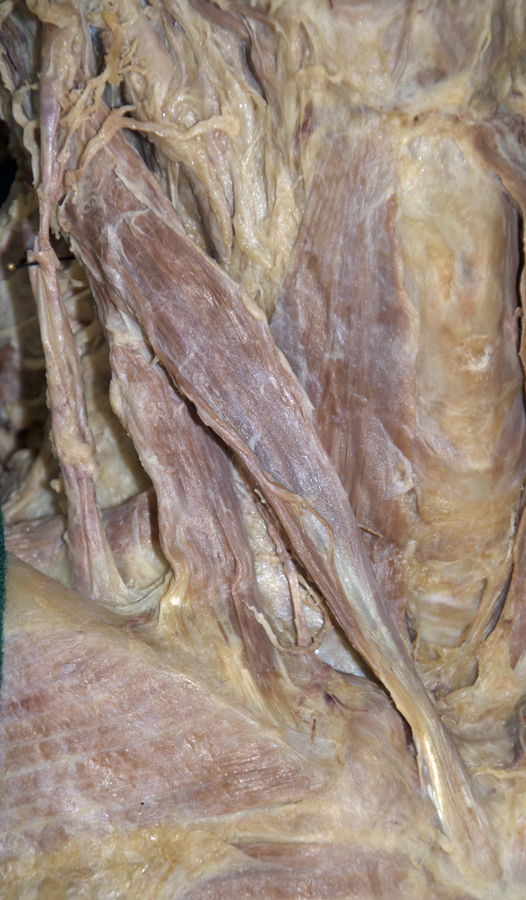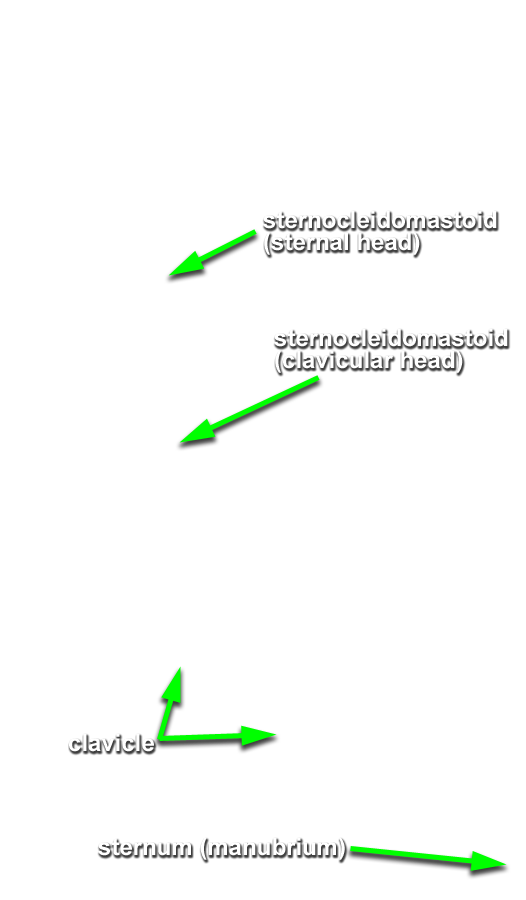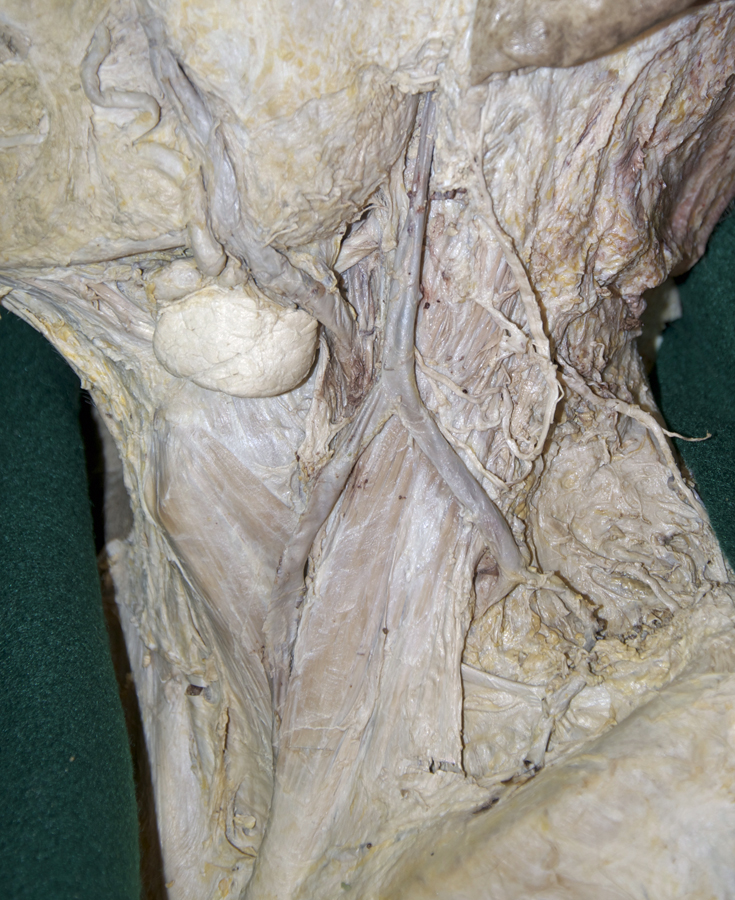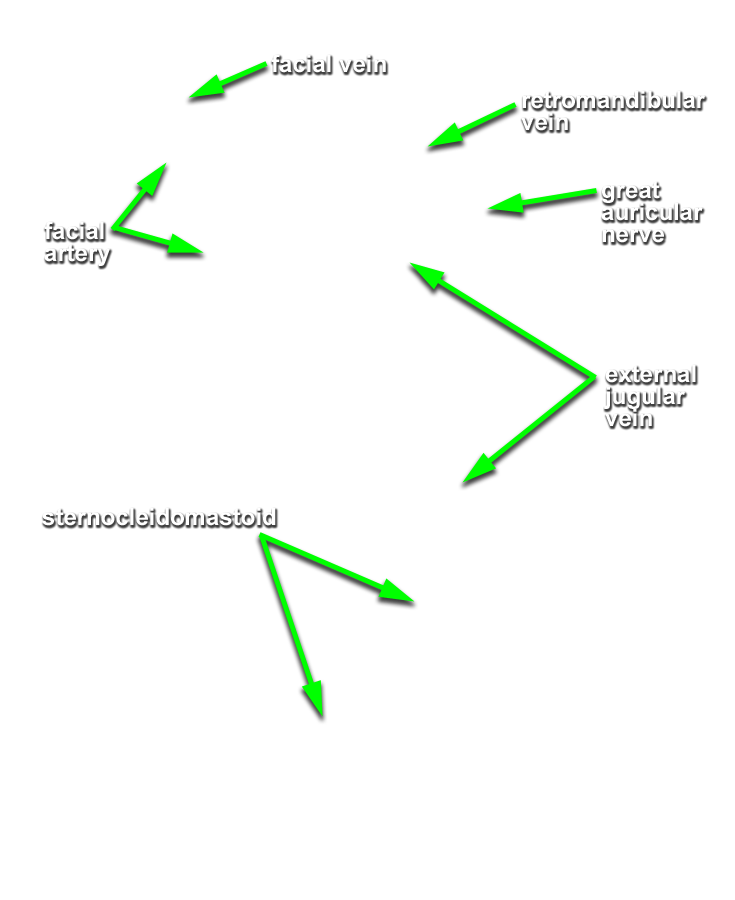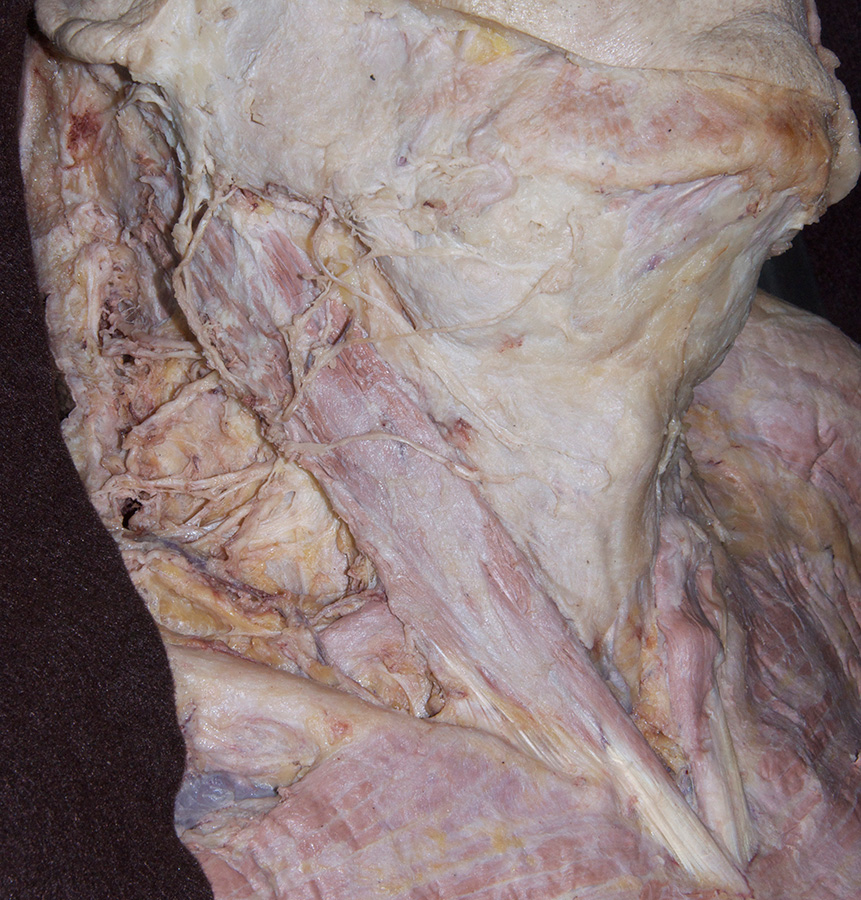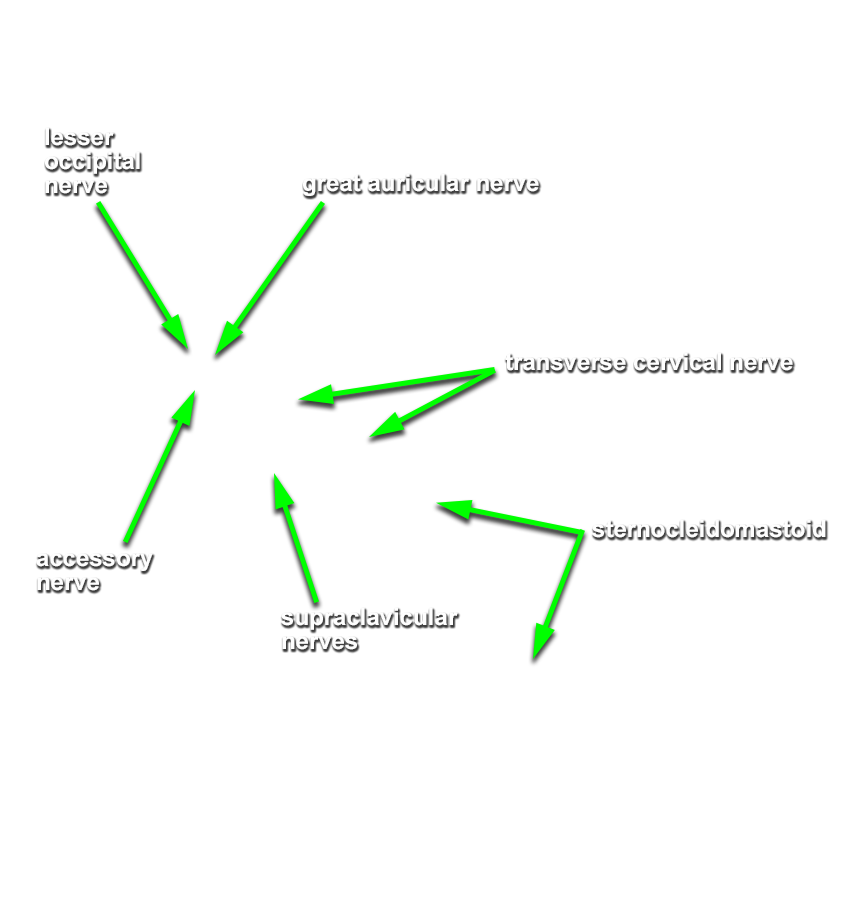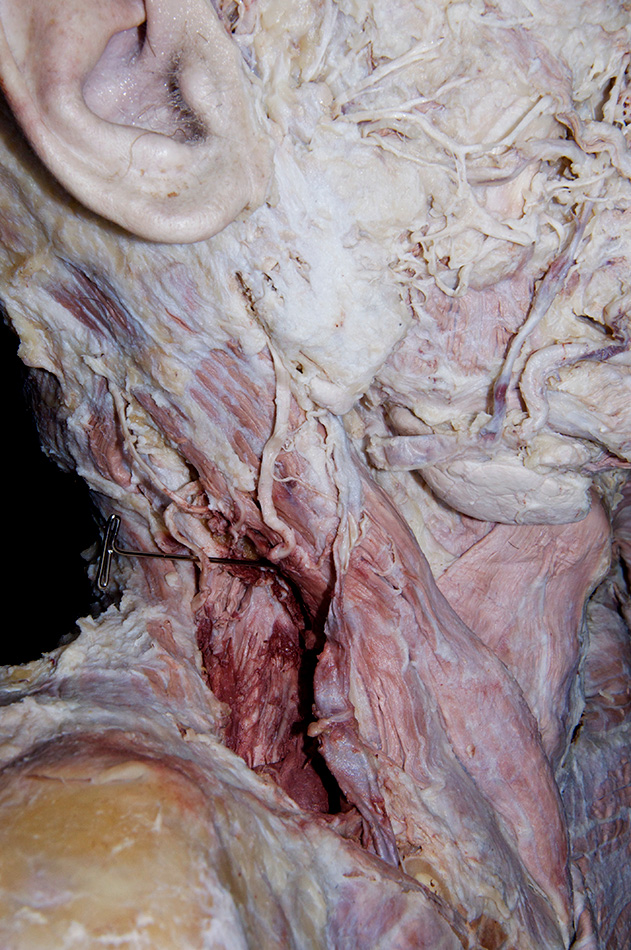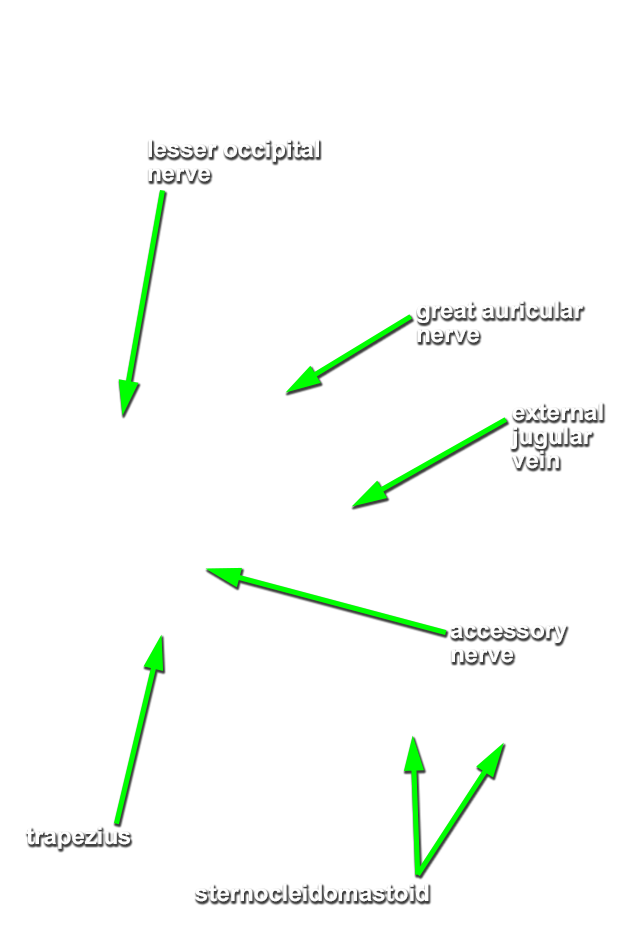(ON BOTH SIDES) Identify and clean the sternocleidomastoid muscle. (G 8.8;N 29;Gl 45.3)
- Define the posterior border of the sternocleidomastoid muscle (SCM). Carefully blunt dissect along the posterior border of the SCM from the mastoid process to its clavicular attachment. Identify and clean the
external jugular vein crossing superficial to the SCM. (G 8.8;N 31;Gl 45.11)
Important Relationships
- The sternocleidomastoid muscle is positioned superficial to both the omohyoid muscle and the carotid sheath.
- The external jugular vein passes lateral (superficial) to the sternocleidomastoid muscle.
- Identify the great auricular nerve adjacent to the external jugular vein. Attempt to identify and clean the other cutaneous branches of the cervical plexus (
supraclavicular, transverse cervical and lesser occipital) emerging from the posterior border of the SCM. (G 8.8;N 31;Gl 45.35) The cutaneous branches start deep to the investing fascia and are often difficult to isolate from this layer of deep fascia.
Important Relationships
- The great auricular and transverse cervical nerves pass posterior and lateral (superficial) to the sternocleidomastoid muscle.
- The lesser occipital nerve passes posterior to the sternocleidomastoid muscle.
- Identify and clean the
accessory nerve emerging from deep to the sternocleidomastoid at the same approximate level as the great auricular and lesser occipital nerves. (G 8.8;N 32;Gl 45.31D) Trace this nerve from the posterior border of the SCM to the anterior border of the trapezius.
Important Relationship
- The accessory nerve passes medial (deep) and then posterior to the sternocleidomastoid muscle.
